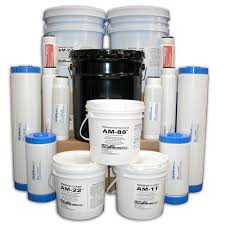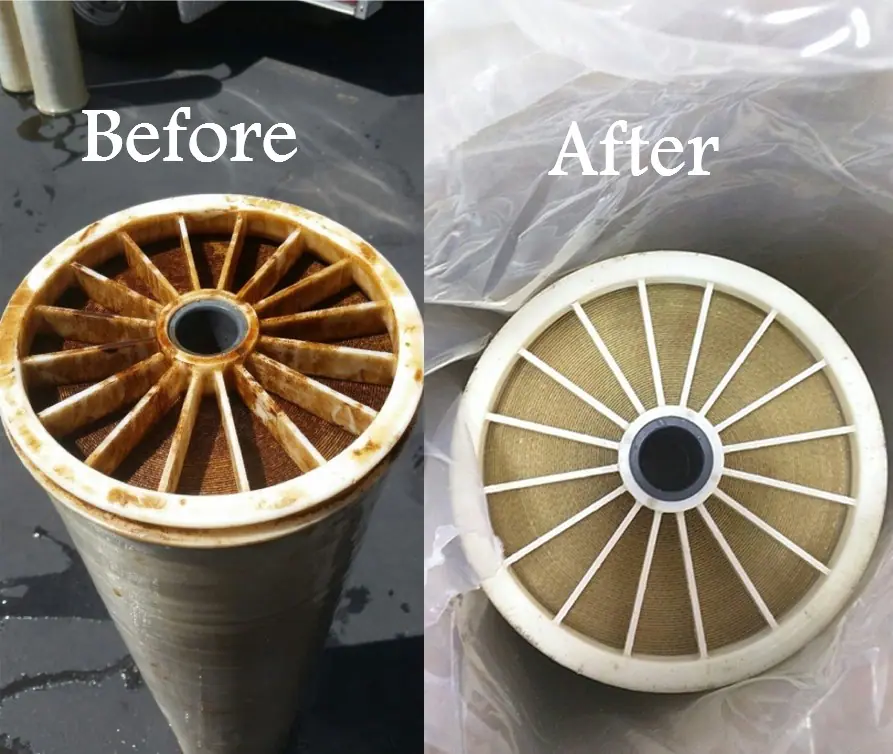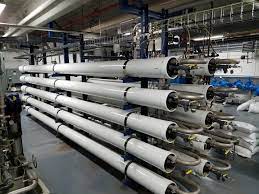Memmbrane Cleaners
Membrane cleaners are chemical solutions or formulations used to clean and maintain the performance of membrane systems, particularly in water treatment applications. Membranes, such as reverse osmosis (RO), nanofiltration (NF), and ultrafiltration (UF) membranes, are susceptible to fouling, scaling, biofilm formation, and other forms of membrane fouling that can hinder their efficiency and lifespan. Membrane cleaners are designed to remove these foulants and restore membrane performance. Here are some key details about membrane cleaners:



Types of Membrane Cleaners:
There are different types of membrane cleaners available, each designed to target specific types of foulants and membrane fouling:
Biological Cleaners: These cleaners are formulated to remove biofilms, microbial growth, and organic matter that accumulate on the membrane surface.
Inorganic Cleaners: Inorganic cleaners are effective in removing inorganic foulants, such as scale deposits, mineral scaling, and metal oxides.
Organic Cleaners: Organic cleaners are designed to remove organic foulants, including oils, greases, hydrocarbons, and organic compounds that may accumulate on the membrane.
Acidic and Alkaline Cleaners: Acidic cleaners are used to remove inorganic scale deposits, while alkaline cleaners are effective against organic foulants.
Cleaning Process:
The cleaning process typically involves the following steps:
Pre-Rinse: The membrane is pre-rinsed with clean water to remove loose debris and prepare it for cleaning.
Cleaning Solution Application: The membrane cleaner is circulated through the membrane system, ensuring contact with the fouled membranes. The cleaner can be applied as a solution, typically mixed with water, or as a concentrated formulation, depending on the product.
Contact Time: The membrane cleaner is allowed to remain in contact with the fouled membranes for a specified duration to ensure effective fouling removal.
Agitation: In some cases, mechanical or hydraulic agitation is employed to enhance the cleaning action of the solution and aid in foulant removal.
Rinse: After the desired contact time, the membrane system is thoroughly rinsed with clean water to remove the cleaning solution and any remaining foulants.
Dosage and Contact Time:
The dosage and contact time of the membrane cleaner depend on factors such as the severity and type of fouling, membrane material, and manufacturer’s recommendations. Following the manufacturer’s instructions and guidelines is essential to ensure effective and safe cleaning.
Compatibility:
It is crucial to select a membrane cleaner that is compatible with the membrane material, as certain cleaners may damage or degrade certain types of membranes. It is recommended to consult the membrane manufacturer or a water treatment specialist for guidance on selecting the appropriate cleaner for a specific membrane.
Frequency of Cleaning:
The frequency of membrane cleaning depends on the level of fouling and the operating conditions of the membrane system. Regular monitoring of system performance, including flux decline and pressure differentials, can indicate the need for cleaning. Cleaning schedules can vary from several times per year to more frequent cleanings, depending on the application.
Safety Considerations:
Membrane cleaners may contain chemicals that can be hazardous if mishandled or improperly used. It is important to follow proper safety precautions, including wearing appropriate personal protective equipment (PPE) and handling the chemicals according to the manufacturer’s safety data sheets (SDS) and guidelines.
It is recommended to consult with membrane system manufacturers, water treatment experts, or membrane cleaner suppliers to determine the most suitable membrane cleaner and cleaning protocol for your specific membrane system and fouling challenges. Following proper cleaning procedures helps to maintain membrane performance, extend membrane life, and ensure consistent and efficient operation of the water treatment system.
Membrane cleaners are utilized in various water treatment applications to clean and maintain the performance of membrane systems. Here are some common uses of membrane cleaners:
Reverse Osmosis (RO) Systems: RO membranes are widely used in desalination plants, water purification systems, and other applications. Over time, RO membranes can experience fouling from substances such as scaling, organic matter, and biofilm. Membrane cleaners are employed to remove these foulants and restore membrane efficiency and permeability.
Nanofiltration (NF) Systems: NF membranes are used for the removal of divalent ions, organic matter, and certain contaminants. However, they are prone to fouling by scaling, colloidal particles, and organic fouling. Membrane cleaners specific to NF systems are employed to remove these foulants and maintain optimal performance.
Ultrafiltration (UF) Systems: UF membranes are used for the removal of suspended solids, bacteria, and viruses. Fouling in UF systems can occur due to the accumulation of particulate matter and biofilm formation. Membrane cleaners are utilized to remove these foulants and restore membrane flux and filtration efficiency.
Membrane Bioreactors (MBRs): MBRs combine biological wastewater treatment with membrane filtration. The membranes in MBR systems can become fouled by organic matter, biomass, and biofilm. Specific membrane cleaners are used to clean the membranes and prevent fouling, ensuring consistent and efficient wastewater treatment.
Industrial Applications: Membrane systems are employed in various industrial processes, such as food and beverage production, pharmaceutical manufacturing, and electronics manufacturing. These systems can encounter fouling from substances specific to the respective industries. Membrane cleaners are utilized to address industry-specific fouling challenges and maintain membrane performance.
Research and Development: Membrane cleaners are also utilized in research and development settings where fouled membranes need to be cleaned for testing, analysis, or further experimentation. Membrane cleaners enable researchers to restore fouled membranes to their original state and study the effects of fouling and cleaning protocols.
It’s important to note that the selection of a membrane cleaner and the cleaning protocol should be based on the specific type of membrane, fouling characteristics, and the manufacturer’s recommendations. Working closely with membrane system manufacturers, water treatment experts, or membrane cleaner suppliers can provide valuable guidance on selecting the appropriate cleaner and optimizing the cleaning process for a specific application.
By incorporating membrane cleaners into membrane maintenance programs, operators can effectively remove fouling, extend membrane life, and ensure the consistent and efficient operation of membrane systems in various water treatment and industrial applications.

